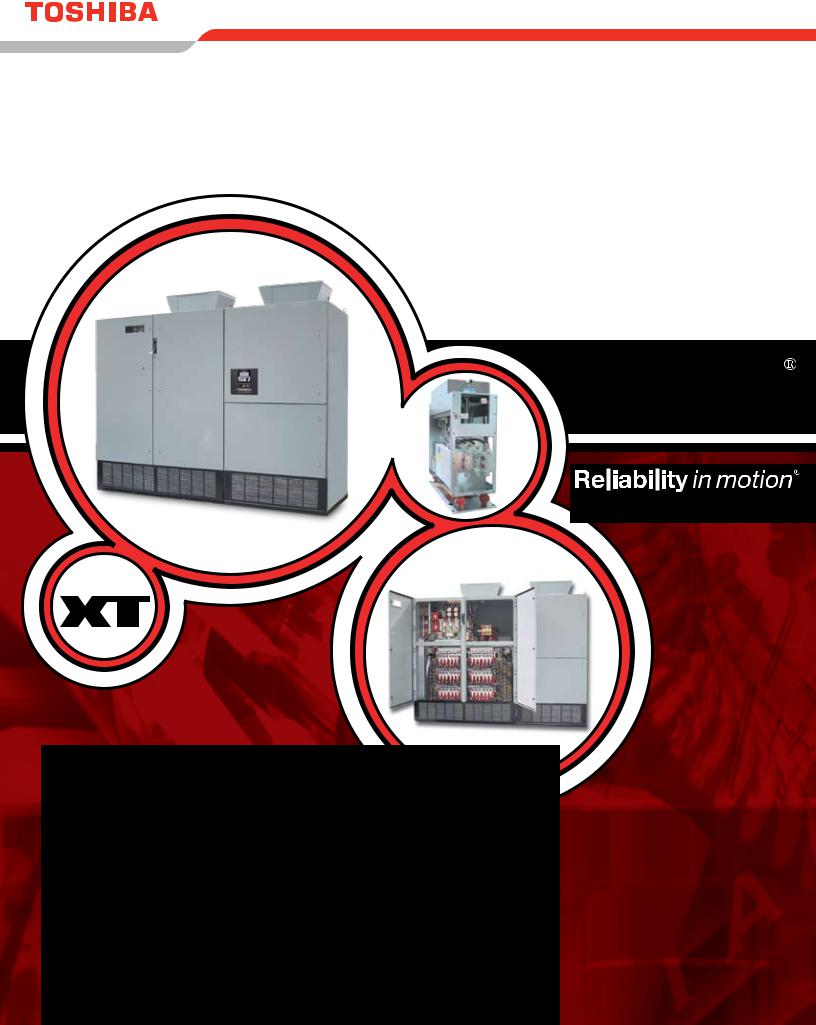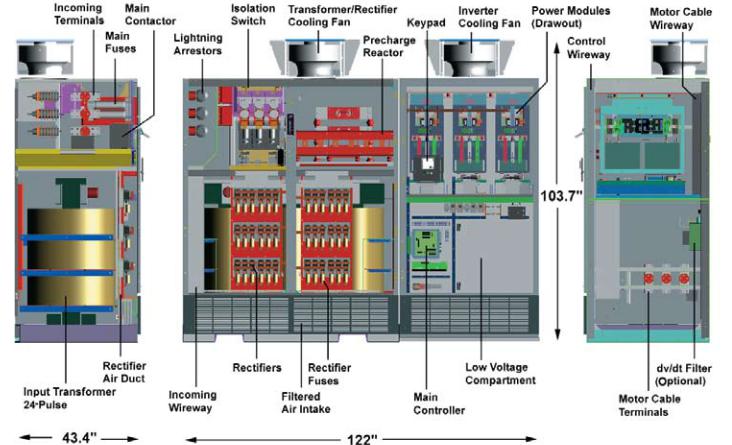Toshiba T300MVi User Manual

MEDIUM VOLTAGE DRIVES
T300MVi
Small Footprint
Reduced Component Count
IEEE-519 1992 Compliant with 24-Pulse Harmonic Cancellation
Additive PWM Output Voltage with No Neutral Shift
May be Used with Standard Motors
Ten-Year Mean Time Between Failures

Built in Harmonic Reduction, Without Filtering or Concern for Long Lead Lengths
Toshiba’s T300MVi contains specially designed transformer and rectifier schemes that provide phase-shift cancellation capabilities, eliminating issues concerning harmonic injections into bus-fed equipment. Instead, the T300MVi medium voltage drive simply looks like a linear load on the incoming AC line. The drive also exceeds IEEE-519 requirements without the addition of any harmonic filters.
Other Benefits:
•Topology Provides Isolation from Ground Faults and Line Surges
•Design Obtains Higher Displacement Power Factor (0.96) than Running Motor Across the Line
•Motor Torque Ripple Negligible Due to Extremely Small Harmonic Current Contents, Reducing Need for Damping Devices, e.g., Couplings, Flywheels
•Reduces Possibility of Drive-Induced Torsional Vibration in Driven Equipment
TOSVERT-300MVi® NPC ADJUSTABLE SPEED DRIVE
Left Side View 2000 HP 4.16 KV Right Side View
Diagram represents standard product offering: T300MVi medium voltage drive 1000 to 2000 HP, 4160 V Input. This product was designed to have one of the smallest footprints offered by any manufacturer.
Stable Speed Control Without
a Speed-Sensing Device
•Provides V/Hz or Vector Control Performance Without a Motor-Mounted Digital or Analog Sensor
•Controls Industrial Processes Utilizing an Internal, High Speed Algorithm
•Capable of Closed-Loop Vector Control for Super High Performance Applications
Continuous Operation During
Momentary Power Failures
•Operates with 30% Undervoltage Condition (Trip Time Based on Drive Overload)
•Five-Cycle Ride-Through During Complete Outages
•Contains Automatic Ride-Through Control
•Allows Restarting into Rotating Load upon Restoration of AC Line Power Following Total Power Loss
